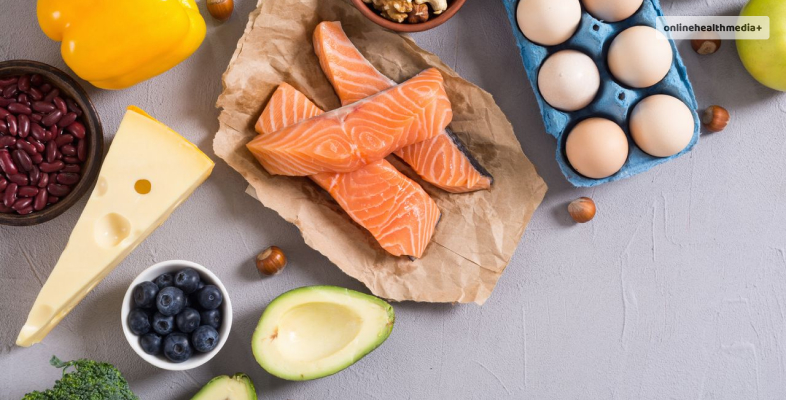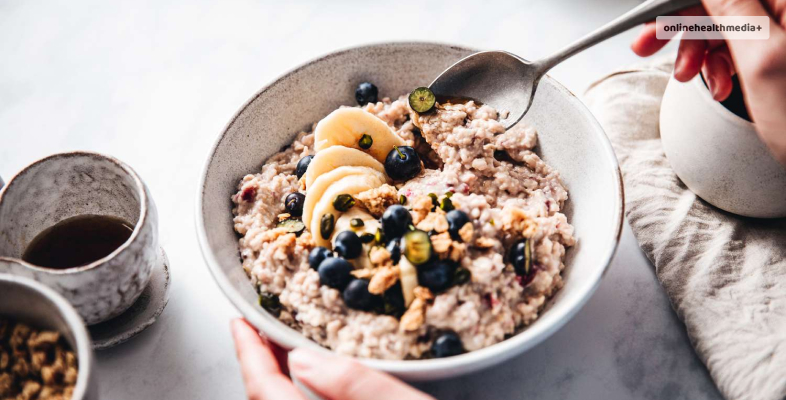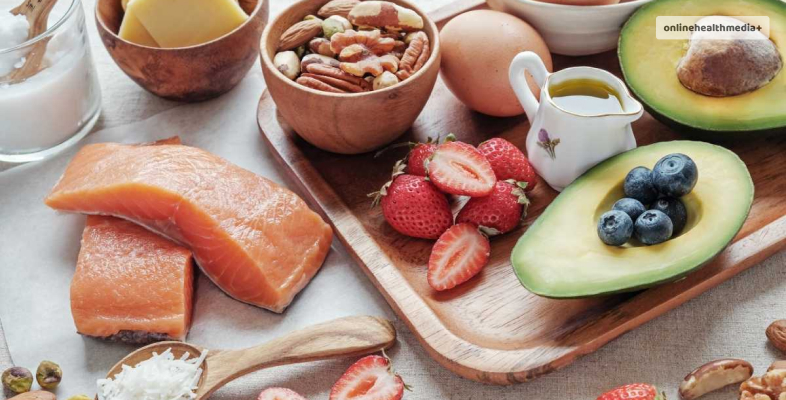Low Fat Diet: The Perfect Way To Lose Weight Without Starving!
Do you want to lose weight and lose all those love handles in your abdomen? Then why not adopt a low fat diet plan?
A low fat diet is a dietary plan that restricts the intake of fats, particularly saturated and trans fats. This type of diet is often recommended for individuals who are trying to lose weight or improve their overall health. In a low-fat diet, the percentage of total daily calories derived from fat is reduced.
Read this post to learn more.
Contents
What Is A Low Fat Diet?

The specific definition of a low fat diet can vary, but it typically involves getting less than 30% of total daily calories from fat.
Fats are an essential macronutrient that provides energy, supports cell growth, and helps in the absorption of certain vitamins and minerals. However, consuming too much saturated and trans fats can increase the risk of heart disease and other health problems.
To reduce fat intake, individuals following a low fat diet often avoid or limit foods high in fat, such as fried foods, fatty cuts of meat, full-fat dairy products, and processed snacks.
Instead, they focus on consuming foods that are low in fat and high in nutrients, such as fruits, vegetables, whole grains, and lean protein sources like poultry, fish, and legumes.
Why Should You Adopt A Low Fat Diet?

Adopting high fiber low fat diet recipes can offer various health benefits and can be recommended for specific individuals based on their health conditions and goals.
Here are detailed reasons why someone might consider adopting a low fat diet:
1. Heart Health
High intake of saturated and trans fats can raise LDL (low-density lipoprotein) cholesterol levels in the blood. LDL cholesterol is often referred to as “bad” cholesterol because it can lead to the buildup of plaque in the arteries (atherosclerosis), increasing the risk of heart disease and stroke.
By reducing saturated and trans fats, a low-fat diet can help manage cholesterol levels and promote heart health.
2. Weight Management
Fats are calorie-dense, providing more than twice the calories per gram compared to carbohydrates and proteins. By reducing fat intake, individuals can lower their overall calorie intake, which can be helpful for weight loss and weight maintenance.
Consuming fewer calories than the body needs leads to weight loss, making a low fat diet an effective strategy for those aiming to shed extra pounds.
3. Diabetes Management
Individuals with diabetes are at an increased risk of heart disease. By adopting a low fat diet, especially one that focuses on healthy fats (monounsaturated and polyunsaturated fats), individuals can better manage their blood sugar levels and reduce the risk of complications associated with diabetes.
Additionally, a low fat diet can contribute to weight management, a crucial aspect of diabetes management.
4. Reduced Risk Of Certain Cancers
Some studies suggest that a diet high in saturated fats, particularly from red and processed meats, is associated with an increased risk of certain types of cancer, including colorectal cancer.
A low fat diet, rich in fruits, vegetables, and whole grains, contains various antioxidants and fiber, which may help reduce the risk of cancer.
5. Improved Digestive Health
A low fat diet, especially one high in fiber-rich foods like fruits, vegetables, and whole grains, promotes healthy digestion.
Fiber adds bulk to the stool, preventing constipation and promoting regular bowel movements. Additionally, a diet low in fatty foods reduces the risk of acid reflux and gallbladder issues.
6. Better Overall Nutrient Intake
A well-planned low fat diet encourages the consumption of nutrient-dense foods. Fruits, vegetables, whole grains, and lean proteins are excellent sources of essential vitamins, minerals, and antioxidants.
By focusing on these foods, individuals can ensure they receive a wide range of nutrients necessary for overall health and well-being.
7. Reduced Risk Of Fatty Liver Disease
Non-alcoholic fatty liver disease (NAFLD) is a condition where excessive fat builds up in the liver.
A diet high in saturated and trans fats can contribute to this condition. Adopting a low fat diet can help prevent and manage NAFLD, promoting liver health.
What To Eat In A Low Fat Diet?

A low fat diet focuses on reducing the intake of saturated and trans fats, which are commonly found in fried foods, fatty cuts of meat, full-fat dairy products, and processed snacks.
Instead, individuals following a low fat diet should focus on consuming foods that are low in fat while being nutrient-dense.
Here are some of the best low-fat foods that can be included in a low-fat diet, along with explanations of their benefits:
Here’s a detailed explanation of some of the best low fat diet foods that can be included in a low fat diet:
1. Fruits And Vegetables
Fruits and vegetables are naturally low in fat and high in essential vitamins, minerals, and fiber. They are rich in antioxidants, which help protect the body from harmful molecules known as free radicals.
These foods are also high in water content, aiding in hydration, and low in calories, making them excellent choices for snacking.
They come in a variety of colors, each indicating different types of beneficial nutrients. This is why a vegan diet and the Hashimoto diet are considered low fat diet.
2. Whole Grains
Whole grains like brown rice, quinoa, oats, and whole wheat contain all parts of the grain, including the bran, germ, and endosperm. This means they are rich in fiber, B vitamins, and minerals.
Fiber aids in digestion helps maintain stable blood sugar levels, and promotes a feeling of fullness, which can prevent overeating. Whole grains in the Lipedema Diet also provide a steady release of energy, making them a good choice for sustained physical and mental activities.
3. Lean Proteins
Lean proteins such as skinless poultry, fish, tofu, and legumes are low in fat and calories. They are essential for building and repairing tissues in the body. Fish, in particular, is rich in omega-3 fatty acids, which have been linked to a reduced risk of heart disease.
Legumes, like beans and lentils, are also high in fiber, making them both a good protein and fiber source.
4. Low-Fat Dairy Products
Low-fat or fat-free dairy products like skim milk, yogurt, and cheese provide calcium, protein, and vitamin D. Calcium is crucial for strong bones and teeth, while vitamin D helps the body absorb calcium.
Choosing low-fat or fat-free versions reduces the intake of saturated fats, promoting heart health.
5. Nuts And Seeds
Although higher in fat, nuts (like almonds and walnuts) and seeds (like chia seeds and flaxseeds) contain healthy monounsaturated and polyunsaturated fats. They also provide protein, fiber, vitamins, and minerals.
While calorie-dense, small portions of nuts and seeds can be satisfying and provide essential nutrients. These fats are heart-healthy and can help reduce bad cholesterol levels.
6. Plant-Based Oils
Healthy plant-based oils like olive oil and canola oil are low in saturated fat and high in monounsaturated fats. They are often used in cooking and salad dressings.
These oils provide essential fatty acids and vitamin E, contributing to overall well-being. Moderation is key as they are calorie-dense.
7. Legumes
Legumes such as beans, lentils, and peas are excellent plant-based protein sources. They are low in fat and high in fiber, vitamins, and minerals.
Legumes have a low glycemic index, meaning they cause a slower rise in blood sugar levels, making them beneficial for people with diabetes or those looking to manage their weight.
8. Whole Grain Pasta And Bread
Whole-grain versions of pasta and bread retain the fiber and nutrients present in the whole grain. They provide sustained energy and are more filling than their refined counterparts.
The fiber content aids in digestion and can contribute to a feeling of fullness, helping control appetite.
High Fat Foods That You Must Avoid In A Low Fat Diet

Here are some high-fat foods that are typically avoided in a low-fat diet, along with detailed explanations of why they are restricted:
1. Fried Foods
Fried foods, such as french fries, fried chicken, and fried snacks, are submerged in oil, absorbing large amounts of unhealthy fats. This process significantly increases the calorie content and saturates the food with trans fats and saturated fats, which are detrimental to heart health.
Regular consumption can lead to weight gain and increase the risk of heart disease and diabetes. Therefore, a high cholesterol low fat diet seems unlikely.
2. Fatty Cuts Of Meat
Meats with visible fat marbling, like ribeye steak and fatty cuts of pork, are high in saturated fats. These fats can raise bad cholesterol levels (LDL) in the blood, increasing the risk of heart disease. Choosing lean cuts of meat and trimming off visible fats before cooking can significantly reduce saturated fat intake.
3. Full-Fat Dairy Products
Full-fat dairy products like whole milk, full-fat yogurt, and regular cheese are high in saturated fats. Saturated fats can raise LDL cholesterol levels, contributing to cardiovascular diseases.
Opting for low-fat or fat-free dairy products ensures you get the essential nutrients without the excessive saturated fat content.
4. Processed Meats
Processed meats like sausages, bacon, and deli meats are often high in saturated fats and sodium.
Additionally, they frequently contain preservatives and additives. Regular consumption of processed meats has been linked to an increased risk of heart disease, high blood pressure, and certain types of cancer.
5. Butter And Lard
Butter and lard are high in saturated fats and should be limited in a low fat diet. Saturated fats, when consumed in excess, can raise cholesterol levels, leading to atherosclerosis (hardening of the arteries) and an increased risk of heart attacks and strokes.
6. Palm And Coconut Oil
These oils are high in saturated fats, even more so than butter. While they are often used in cooking and baking due to their stable nature at high temperatures, they significantly contribute to LDL cholesterol levels.
Healthier alternatives like olive or canola oil, which are higher in unsaturated fats, are better choices.
7. Fast Food
Fast food items, including burgers, fries, pizza, and fried chicken, are often loaded with unhealthy fats. They are high in trans fats, saturated fats, and sodium.
Regular consumption of fast food can lead to obesity, type 2 diabetes, and heart disease due to their high-calorie and low-nutrient content.
8. Commercially Baked Goods
Baked goods such as cakes, pastries, cookies, and doughnuts often contain hydrogenated oils, which are a source of trans fats. Trans fats are particularly harmful as they not only raise bad cholesterol levels but also lower good cholesterol levels, significantly increasing the risk of heart disease.
Conclusion: Fat No More!
When following a low fat diet, it’s crucial to focus on the overall balance of nutrients. Ensuring an adequate intake of protein, fiber, vitamins, and minerals is essential for overall health and well-being.
Also, portion control is important even when consuming low-fat foods, especially those that are higher in calories, like nuts and seeds. Consulting a healthcare provider or a registered dietitian can provide personalized guidance and ensure that the diet is meeting individual nutritional needs.
Including these foods in a balanced way can provide essential nutrients while keeping the overall fat intake low. It’s important to pay attention to portion sizes, especially for foods like nuts and oils, to maintain a healthy calorie balance.
Consulting a healthcare provider or a registered dietitian for personalized advice can be beneficial when making significant changes to your diet.
It’s important to note that not all fats are harmful. Healthy fats, such as those found in avocados, nuts, seeds, and fatty fish, are important for overall health and should be included in moderation.
Additionally, individual dietary needs vary, so it’s advisable to consult with a healthcare provider or a registered dietitian before making significant changes to one’s diet to ensure that it is appropriate for specific health conditions and goals.
Avoiding these high-fat foods and opting for healthier, low-fat alternatives can greatly improve overall health and reduce the risk of chronic diseases associated with high-fat diets.
Choosing a variety of nutrient-dense, low-fat foods and engaging in regular physical activity are key components of a balanced and healthy lifestyle.
Also Read
- The Benefits Of Physiotherapy For Chronic Pain Management.
- Anxiety Got You Feeling Restless? Try Meditation For Anxiety!
- Healing From Within: Harnessing The Body’s Energy In Recovery.



